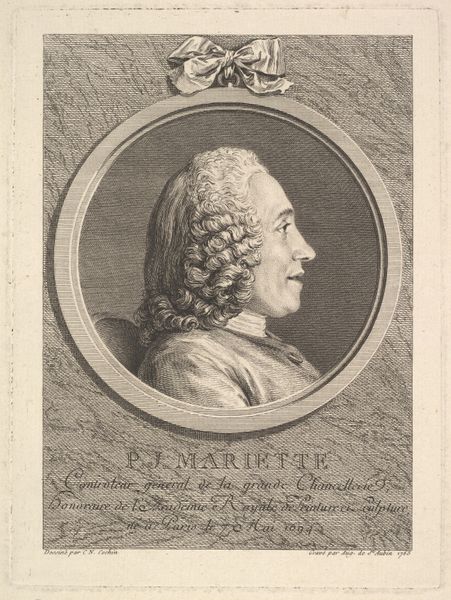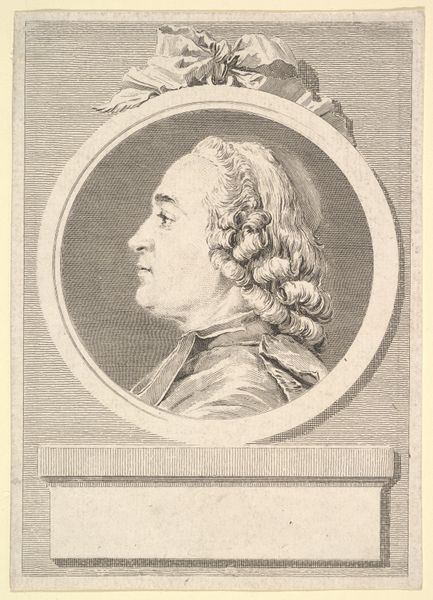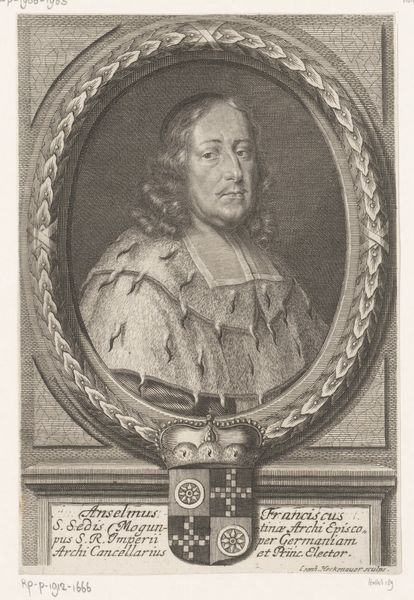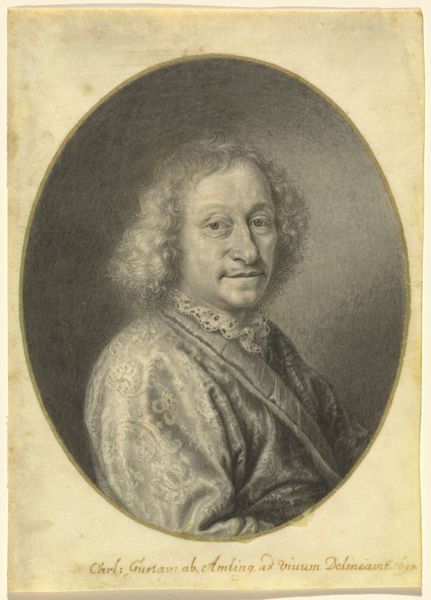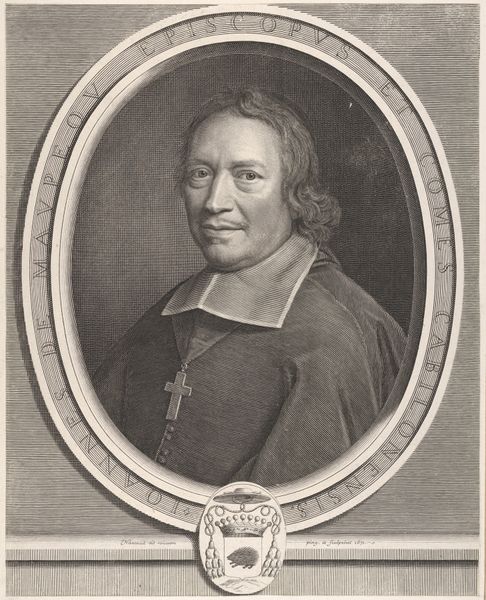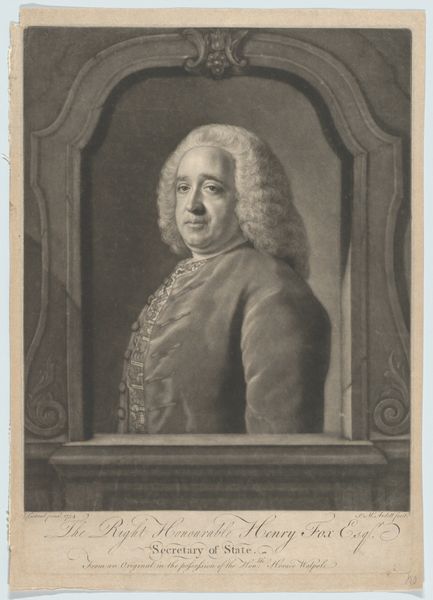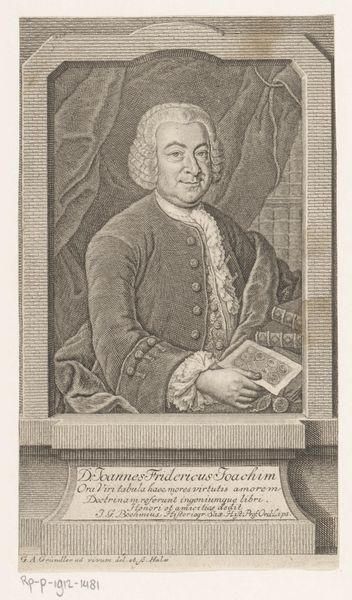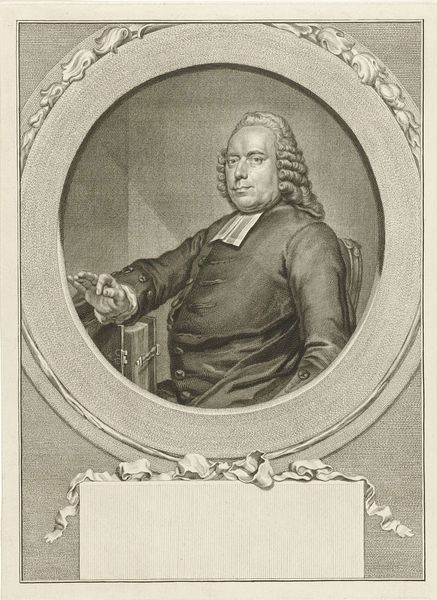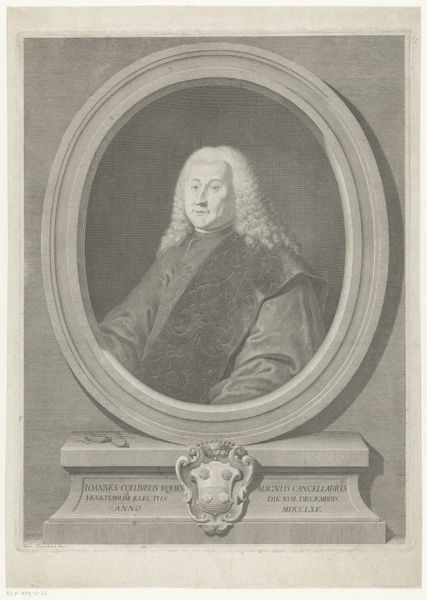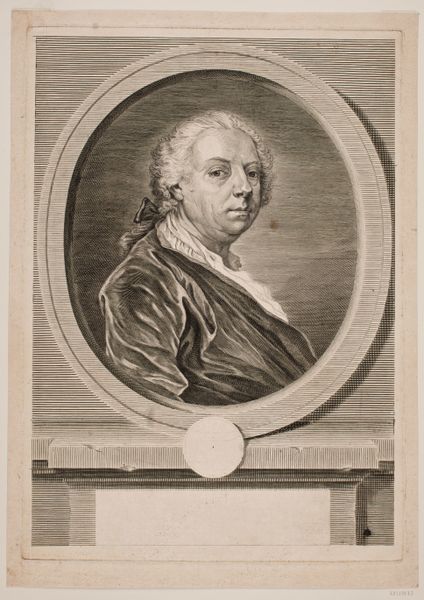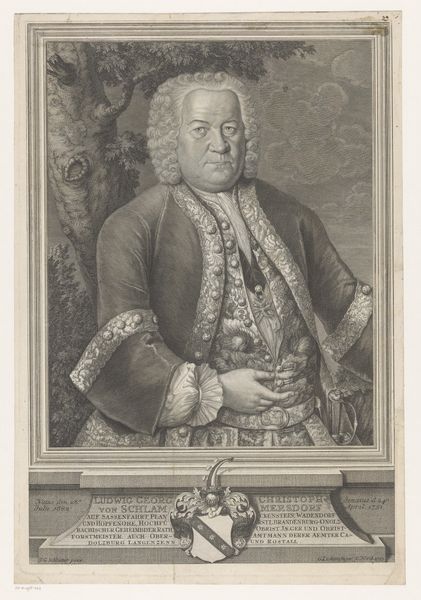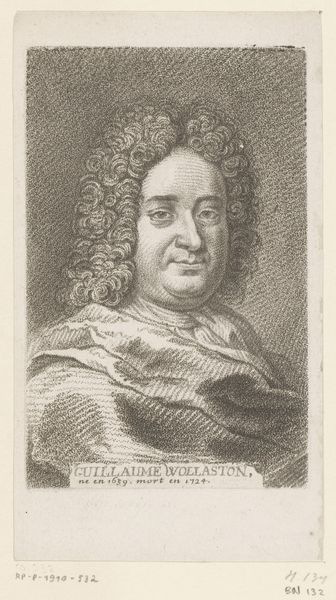
Dimensions: 191 mm (height) x 131 mm (width) (plademaal)
Curator: Here we have J.F. Clemens’s “Charles Bonnet,” an engraving from 1779, held at the Statens Museum for Kunst. It presents a portrait of Bonnet in profile. What's your immediate reaction to the artwork? Editor: Well, it’s a rather crisp image. The precise hatching gives a remarkable sense of form, almost sculptural. And yet, the texture seems quite flat and linear, as one would expect of engraving. The limited tonal range lends it a somewhat severe air, don't you think? Curator: Perhaps, but severity was a common visual strategy to convey authority during that era, especially in portraits commissioned by or for learned societies. It lends an air of intellectual gravitas. These portraits served as endorsements, legitimizing the sitters. Editor: Interesting point. Looking at the composition, the oval frame, typical of portraiture then, really encloses him, focusing our attention entirely on his face and wig. The rendering of the wig’s curls contrasts sharply with the linear fabric of his clothing. Curator: Precisely. And this depiction wasn’t arbitrary; it served the man's reputation. Bonnet was a prominent naturalist and philosopher. Visual associations with intellectualism were crucial in bolstering the Enlightenment ideals he advocated. Engravings like these circulated widely, fostering and disseminating those ideals among educated elites. Editor: I'm intrigued by the artist's precision, capturing the folds of his coat. Each line contributes to a convincing, though somewhat idealized, representation. The minimal background and lack of color truly emphasize Bonnet's character through line and form. Curator: Indeed. The success of such portraits hinges on their ability to encapsulate the sitter's public persona. Clemens has provided Bonnet with enduring recognition and facilitated broader social and intellectual impact through his meticulous craft. Editor: The image becomes a symbol of Enlightenment thought itself. I see what you mean by its visual legacy. Curator: It leaves us with much to reflect on when it comes to art’s broader social and political life. Editor: Agreed. The pure technique gives even further symbolic power, in light of these historic underpinnings.
Comments
No comments
Be the first to comment and join the conversation on the ultimate creative platform.
